Freedom is a multifaceted diamond. It is costly, born after a period of great pressure, and precious. Living a life devoid of debt is one facet. Debt makes one a slave to the debtor, and a slave is not free. Less regulation is an aspect of freedom. The possession of arms protects freedom. And though it’s arguably not the most important facet, the one that probably resonates with preppers the most is food independence.
by Aden Tate, contributing writer and author of The Faithful Prepper
Food independence is freedom. The regulating against food independence is one of the most egregious examples of tyranny that one can think of. Tyrants threaten those who “hoard” food (President FDR), don’t permit men to buy the food that they want (raw milk among many), and do everything in their power to keep men from making a living processing and selling their own food. When a man can’t even collect the rainwater that falls off of his own roof, can he truly say that he lives in freedom?
What is Food Independence?
Food independence is the ability to not have to rely on others for your own food supply. Food independence permits one to no longer have to rely on an increasingly fickle and unstable food supply system. Homesteads and farms that produce and store the greater majority of the food that their occupants consume are classic examples of food independence.
The Fragility of Our Food System
Odds are, if you’re reading this, you already have an idea of just how fragile our current food distribution system is. The Japanese concept of Kanban, or just-in-time delivery, has caused the greater majority of American grocers to keep a minimal amount of food storage on-site at any given time.1 The theory is that the less money tied up with warehousing, the more capital that can be utilized for other expenses. As a result, most grocery stores only carry roughly three days of food within their store at any given time.2
From a business perspective, it makes sense, but one of the cons with this type of thinking is manifested when the trucks quit rolling in. No more truckers delivering supplies, no more food for locales that are grocer-reliant for all of their food.
This in turn leads to regions where – should there be a flood, hurricane, tornado, or larger poo-poo hits the fan type moment – those particular regions are exposed to a much higher risk of chaos compared to more agrarian neighborhoods. The majority of the American population keeps roughly three days of food within their homes at any given time.3
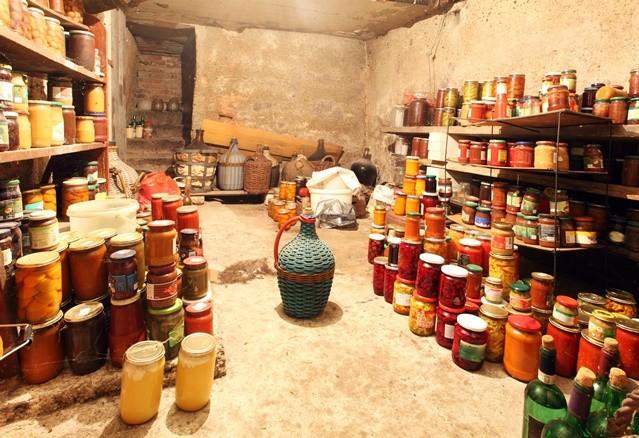
This is the oddity when you look throughout history, and I would argue only began to become commonplace around the 50s or 60s when the population began to grow more urbanized. For the millennia of mankind prior to that, men understood that a proper larder filled with food was the wisest course of action. Oftentimes it proved to be the only course of action if one wanted to live to see the next harvest. You stored food or you starved.
Today’s society has pulled us away from that, and taught that such behavior is not normal.
“Yeah, we needed to do that when we were an agrarian society, but we have grocery stores all over now! There’s no need!”
Food Production – Past and Present
Yes, we were primarily an agrarian society before, and yes, there are grocery stores all over now, but that by no means indicates that food independence is foolishness. It is still a facet of freedom, regardless of how many grocery stores and restaurants we have surrounding us. Food independence is an insurance policy that allows one extra protection from disaster’s siege. It’s a hedge of protection that assists in your independence from the world at large. The world may have drought, may have famine, riots, lack of power, empty shelves – but with food independence you are able to greatly dampen the personal consequences of a disaster that so impacts the lives of those around you.
Related article: 24 Must-Have Victory Garden Vegetables
In the modern world, the greater part of the average person’s food is grown and raised hundreds, if not thousands of miles from his own home. Food travels an average of 1,500 miles from farm to plate in America.4
- Do you eat fresh strawberries in winter?
- What about fresh corn?
- Fresh spinach?
- If so, where do you think that it came from?
The fresh foods you eat most likely aren’t even capable of being grown outdoors in your winter environment. Odds are the packaging will tell you that it came from a state far away from yours, if not a different country entirely. A walk through my grocery store also tells a story: blueberries from California, apples from Washington, oranges from Florida, and beef that came from Kansas. All of those places are further than 100 miles from my home. If one truly believes that an EMP, flood, long-lasting power disruption, or other disaster is potentially capable of hitting their area, is it not foolish to wholly trust the current supply system for one’s food supply?
Food Security and Personal Security
It’s interesting how we carry concealed weapons because we don’t trust others with our protection, and believe our security is primarily our responsibility. We save in a retirement account because we believe the same things regarding our financial well-being. And both of those trains of thought are spot-on, and I agree with them 100%. Why do we not apply the same principles though to one of the most important aspects of our life – food?
Food Independence and Charity
Post-disaster, I have argued that there are roughly three days before society begins its collapse.5 When the hunger pains begin, the societal pain begins as well. However, there are those who mistakenly believe that they will be able to assist every single person that comes their way. Unfortunately, this is unrealistic and a “butterfly and rainbows” view on life. A lifeboat escaping the wreckage of a sinking ship can only rescue so many people. Despite the plethora of people bobbing around in the water around it, the fact remains, the lifeboat can only carry so many. Attempting to ignore this law of nature is to doom everybody that is on board.
In the same vein, your farm or homestead can only produce so much food. There’s simply no way around it. Two acres of land cannot produce enough food for every single person within your county, and perhaps not even for your own neighborhood.
I am not arguing for the neglect of every single person that needs your help post-disaster. What I’m saying is that food independence gives you a bigger lifeboat. With food independence you are able to help even more people than you would have been able to otherwise.
Aspects of Food Independence
So what are the two aspects of food independence? What is it comprised of? Well, let’s look at the first: stored food.
Stored Food
Just as keeping an emergency fund in the bank helps you to skim over what would have been a much harder time, having a deep larder that is well stocked with high-quality, nutritious food enables you to skim over many of the bumps of life with a minimized disruption. It’s an insurance policy for an uncertain future. Even if the disaster is more on a personal scale (job loss as example). A deep larder allows one to have confidence that they do already have a steady supply of food available that they can fall back to for a time as things begin to mend, and “get back to normal.” That family won’t go hungry.
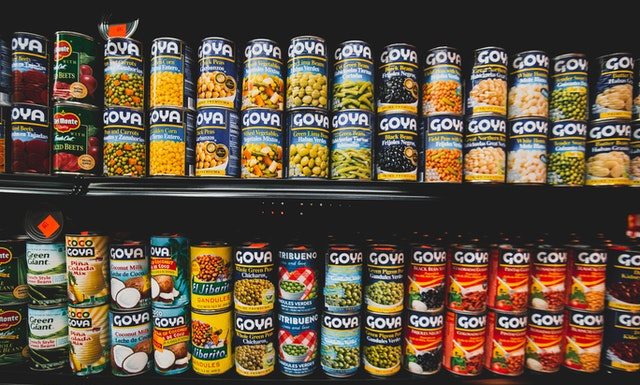
Stored food ends up saving one money as well. Inflation is an insatiable beast, and grows year by year. Food bought one, two, or five years ago is most likely going to be cheaper food to eat than food that you can buy today. And if one actually cans and stores the food that they themselves produce, the food supply is even cheaper!
I like to keep a record book recording every cantaloupe, egg, gallon of carrots, and other bit of food that my farm produces, while simultaneously keeping track of my expenses (tools, seed, feed, etc.). Literally every year that I have done this, by December 31, I can go back and prove that every dollar that I’ve put into the ground and into livestock has come back to me with exponential growth in value
I don’t put money into expensive mechanized farm equipment. My farm animals are not pets (as Joel Salatin says, a farmer with pets is broke). Instead I rely on the work that I can put into my crops with hand tools after I get off of my day job. I then go to the grocery store and compare the prices of the food I grow with what it would cost for me to buy it. Typically, I grow around $1000 of food per year. That’s a lot of money that I save doing something that’s healthy, produces healthier food, improves the soil of my farm, is fun, and helps to improve my food independence.
Related article: Long-Term Coffee Storage for Caffeine Survival
Should there be a TEOTWAWKI-type scenario in the near future as well, I know for a fact that my entire local family would be coming to my farm. I have no intentions of turning away family. Food independence via stored food allows us the ability to live as we figure out the steps needed to ramp up the next aspect of food independence: food production.
Even something as simple as lettuce takes at least 30 days to grow. Do you have enough stored food to last the 30 days it would take for you to be able to start growing food for the table? And do you have more than that? Because odds are, you’re not going to want to live off of lettuce for the other 60+ days that it’ll take for the majority of your other crops to start coming in.

Food Production
Stored food only lasts so long. It is a finite resource. And once it is gone, it is gone forever, unless one has some means of restocking the shelves. Food production capability is what keeps the meat on the table. Sure, hunting, fishing, and trapping are all valid forms of doing such, but if one is perfectly honest with themselves, and has any practical experience in the matter, they know that this can’t be their primary course of action to survive in a post-disaster scenario.
“But there are tribes of people all over the world who live solely through hunting-gathering lifestyles!”
Yes, but they have skills that they’ve been practicing and handing down for centuries. Do you? They most likely live in places where the competition for such resources is limited. Do you? Is it really fair to compare the hunter-gatherer lifestyle of a Massai warrior in Africa with you in a post-collapse, suburban America? It’s apples to oranges!
When every other member of the population that didn’t prepare for disaster decides that hunting and fishing are the ways that they are going to get their food as well, does it look like this is the easiest, best, or safest way to ensure a continuing food supply? I would argue – no. They are no doubt essential activities, but they should be auxiliary, not primary.
The primary course of food production should be through farming and gardening. The husbandry of livestock and the raising of crops. Both are essential to an ideal set up post-disaster. Two beehives, six hens, and two rabbits can provide a wealth of food to a family both before and after a disaster while utilizing a minimal amount of space. Honey, wax, eggs, meat, and pelts could all be obtained from such a small assortment of animals, and they could be safely and hygienically raised on a tenth of an acre.6

We saw in the collapse of Greece that it was those who understood food production that ended up being the best off. Those who could still put food on their own table from what they had produced were the ones who ate the best.7 The same is currently playing out in Venezuela. It is those who have bananas that are able to get haircuts, and those that can produce other forms of food that are able to continue to eat, and get the supplies of life that they need as well.

And whatever excess was available could either be stored for later consumption, or bartered for other necessities of life. Hygiene supplies, tools, medicine, clothing, or ammunition can all be bought with food in a post-collapse environment. But that is only when commerce of some sort is set in place again.

Food independence is a vital part of what keeps families alive post-disaster.
“But what if I don’t have a farm, land, or the like? What if I live in an urban apartment?”
Homesteading is clearly the ideal for those who are concerned about being prepared for the future. There’s no way to sugarcoat things to say otherwise. But that by no means means that those in suburban or urban environments are completely unable to do something to help ensure that they have at least some degree of food independence. Gardens can be anywhere.
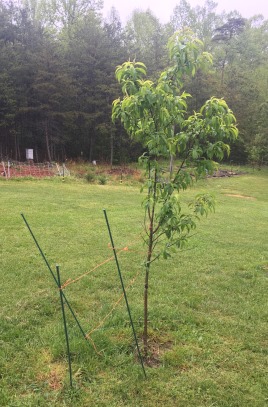
It is very easy to squeeze in some form of food-producing plant in areas where there was no prior production value. Fruit trees can easily produce an overabundance of food on minimal ground. Many localities are now becoming open to the idea of a small flock of hens within the heart of the city. Beehives can fit just about anywhere within an urban environment. Rabbit hutches don’t take up much space as well, and rabbits breed so prolifically to be an amazing renewable source of meat. Mushrooms are very easy to grow on minimal space.
For more information on such, there are a couple of key references that I have found to be fantastic vaults of information:
“But post-collapse, everyone will know that I’m the one with the food! They’ll see my gardens and fruit trees! And what if I live in a sky-rise apartment! I have no access to soil, and thus no ability to grow my own food!”
Yes, that does make the situation tricky, but that still doesn’t mean that one is unable to take steps to ensure some degree of food independence.
I personally grow microgreens inside my house. I grow them in Dollar Tree bread tins that I keep stored on top of my fridge. The harvest allows me to have a salad of sunflower sprouts and broccoli seedlings every day. It’s healthy, tastes great, is incredibly cheap, is very easy to grow, and takes all of two square feet of space. This is a type of operation that would be very easy to expand as well. Either add more bread tins, or add a bigger container.
With access to plenty of light, there are a number of other food-producing plants that can be grown in containers within one’s own home as well. Growing up, our entire house was kept with potted plants of some type or another scattered throughout the corners and tables of the house. We by no means lived in the middle of a jungle-ized living room. The whole set up was very classy. Yet these plants could have just as easily been converted into food-producing plants and the classy nature kept.
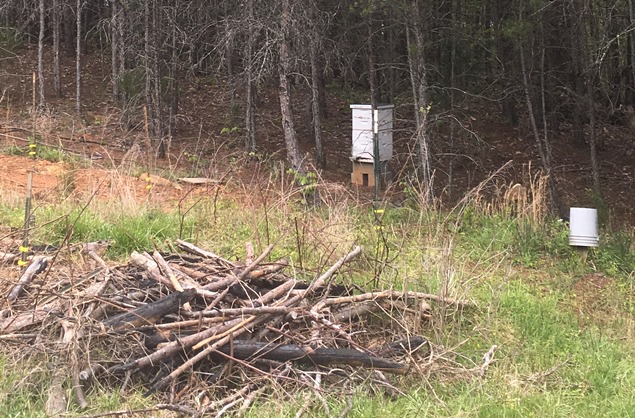
Though trickier, mushrooms can be grown inside as well.
Tradd Cotter details some fascinating ways to grow mushrooms indoors in his book Organic Mushroom Farming and Mycoremediation that will allow one access to a steady crop without having to worry about mushrooms colonizing the drywall of your home.
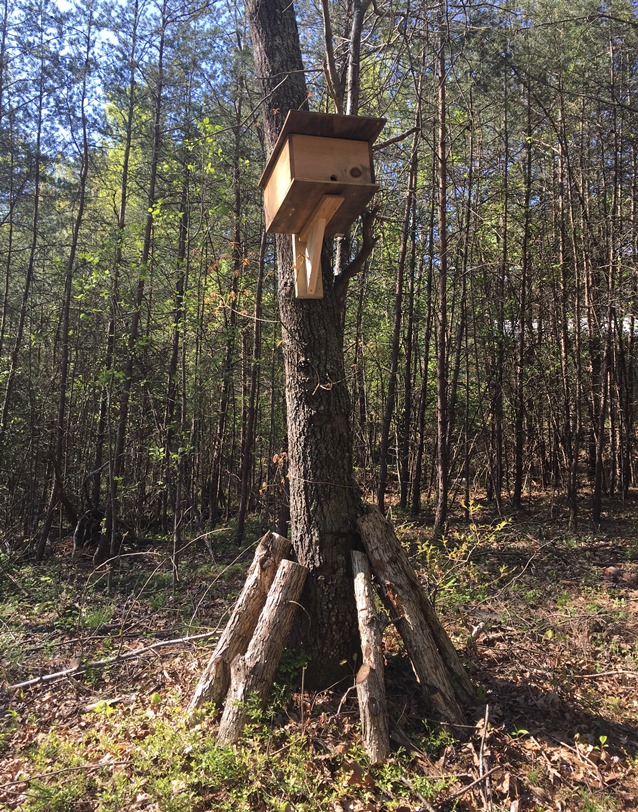
If one has concerns about the concealability of food production though, I highly recommend reading Rick Austin’s Secret Garden of Survival series. It’s currently a trilogy of books that all detail ways to grow and produce food without outsiders realizing that is indeed what is growing in front of them.
I’ve found the following books to be incredibly helpful with this question of concealable edible landscaping as well:
- Stalking the Wild Asparagus by Euell Gibbons
- Backyard Foraging by Ellen Zachos
- Edible Wild Plants by Lee Allen Peterson
- Medicinal Plants and Herbs by Steven Foster/James A. Duke
All of these books will help you to incorporate food production into your very landscaping without anybody else being any the wiser. The inoculation of certain parts of your landscaping/mulch with mushroom spawn would be another excellent way to add to your food production ability since only a minute portion of the population can accurately identify mushrooms, and the majority are afraid to take the risk of eating one that they find off the ground. However, by inoculating your mulch with something such as the Garden Giant from Fungi Perfecti, one can have the knowledge that they know what it is that is growing, without the rest of the population knowing.
References
- Tate, Aden. The Faithful Prepper. pg. 3
- https://valleyfoodstorage.com/blogs/inside-vfs/how-much-food-does-a-grocery-store-really-hold
- Baker, L. & Cormier, L. (2015). Disasters and Vulnerable: Evidence-Based Practice for the Helping Professions. Danvers, MA: Springer Publishing Company. P. 26.
- https://cuesa.org/learn/how-far-does-your-food-travel-get-your-plate
- Tate, Aden. The Faithful Prepper. Pg. 171
- The Backyard Homestead Guide to Raising Farm Animals. P7
- Lewis, P. (2015, July 4). Cash under the mattress or chickens in the yard? The Rural Revolution blog. https://www.rural-revolution.com/2015/07/cash-under-mattress-or-chickens-in-yard.html